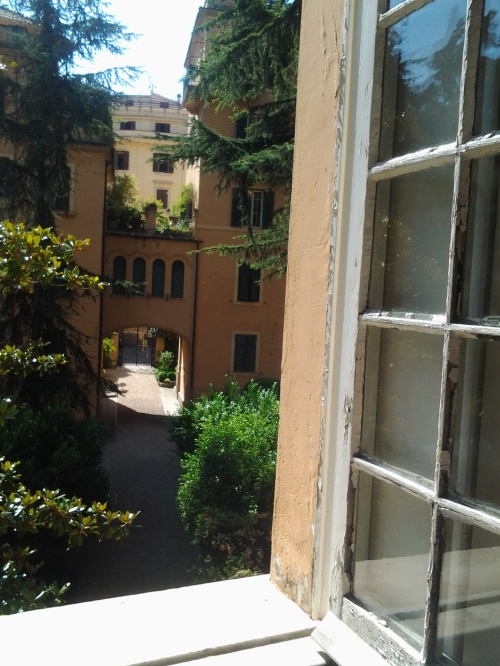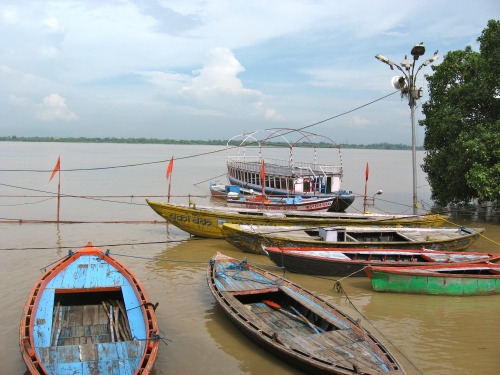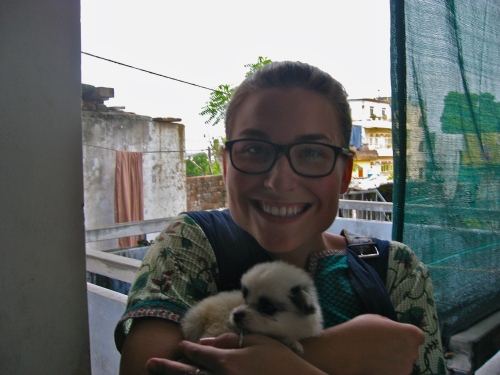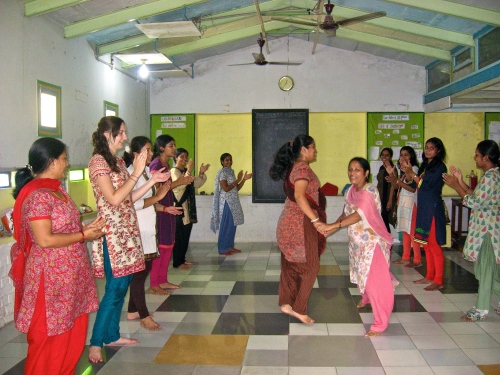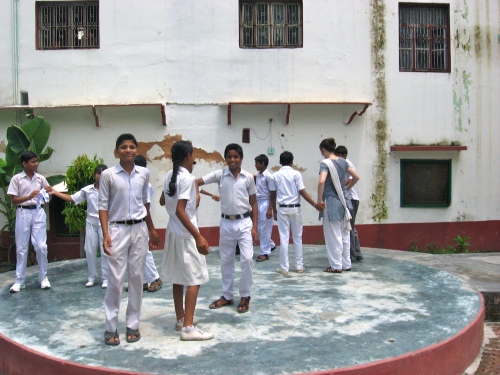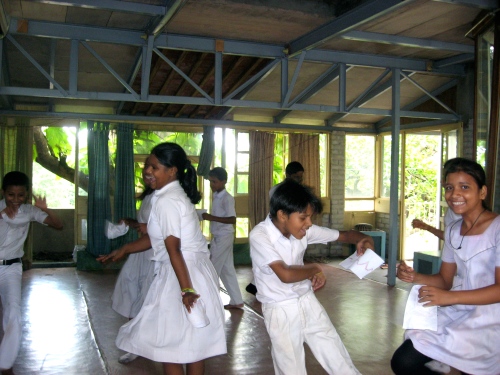Before leaving Portland three months ago, I made a ritual last-stop at Powell’s bookstore. Browsing, I picked up 2012’s The Best American Travel Writing. I could use some tips on squeezing life (and life in India, at that!) through a pen onto paper, I thought. Plus, it was on sale.
There was an essay about Varanasi. I’ve read it at least six times, I love it. I’ve re-typed it for you:
Maximum India
Pico Iyer, from Condé Nast Traveler
There were fires, six, seven of them, rising through the winter fog. Groups of men, scarves wrapped around their heads, eyes blazing in the twilight, were gathered barefoot around the flames, edging closer. A near-naked man with dusty, mated dreadlocks down to his waist was poking at a charred head with a bamboo pole. There was chanting in the distance, a shaking of bells, a furious, possessed drumming, and in the infernal no-light of the winter dusk, I could make out almost nothing but orange blazes, far off, by the river.
How much of this was I dreaming? How much was I under a “foreign influence,” if only of jet lag and displacement? Figures came toward me out of the mist, smeared in ash from head to toe, bearing the tree-pronged trident of the city’s patron, Shiva, the Ender of Time. In the little alleyways behind the flames was a warren of tiny streets; a shrunken candle burned in the dark of a bare earth cavern where men were whispering sacred syllables. Cows padded ceaselessly down the clogged, dung-splattered lanes, and every now and then another group of chanters surged past me, a dead body under a golden shroud on the bamboo stretcher that they carried toward the river, and I pressed myself against a wall as the whisper of mortality brushed past.
It was hard to believe that just three days before I had been in California, marking a quiet New Year’s Day in the sun. Now there were goats with auspicious red marks on their foreheads trotting around, and embers burning, and oil lamps drifting out across the river in the fog. Along the walls beside the river were painted faces, laughing monkey gods, sacred looming phalluses. The shops on every side were selling sandalwood paste, and clarified butter oil for dead bodies, and tiny clay urns for their ashes.
Imagine finding yourself in a Hare Krishna celebration as populous as Philadelphia. All around you, people are shaking bells, whirling, singing joyfully, though their joy has to do with death, as if everything is upended in a holy universe. At the nearby Manikarnika Well, the god Shiva is said to have met the god Vishnu, usually and occupant of a parallel world. The result of this propitious encounter is that bodies are burned in public there – as many as a hundred a day – and the most sacred spot in the center of Hinduism is a smoking charnel-ground.
On paper, Varanasi is a holy crossroads, a place of transformation tucked between the Varana and Asi rivers, along the sacred Ganges. It is, many will tell you, the oldest continuously inhabited city on earth, as ancient as Babylon or Thebes. Because the city, now housing as many as 3 million (half a million of the squeezed into the square mile of the Old City), has never been a center of political power or historical conflict, it has been able to continue undisturbed, and fundamentally unchanged, as the most sacred citadel of Hinduism and a cultural hot spot. Bathe yourself in its filthy waters, devout Hindus believe, and you purify yourself for life. Die or be burned along its banks and you achieve moksha, or liberation, from the cycle of incarnation.
But if Varanasi means anything, it is the explosion of every theory and the turning of paper to ash. The heart of the city is a chaotic 3-mile stretch of waterfront along Mother Ganga on which there are more than seventy ghats, or steps, from which the faithful can walk down into the water. At the top of these steps stand huge, many-windowed palaces and temples that are all in a state of such advanced decay that they seem to speak for the impermanence of everything. At this very spot, the southeast-flowing Ganges turns, briefly, so it seems to be flowing back toward the Himalayas from which it came, and bathers on its western bank can face the rising sun. Varanasi’s original name, Kashi, means City of Light, although millennia of dusty rites and blazing bodies and holy men showing no interest in normal human laws have also left it a city of shadows or, as the wonderfully obsessive Varanasiphile Richard Lannoy writes, a “city of darkness and dream.”
The son of Indian-born parents, I am (in theory) a Hindu, and though I have never practiced the religion, I was finding Varanasi to be more a mad confusion than the sublime order that a good Hindu would see. Yet in the months before I made my first trip to the city, everywhere I turned seemed to lead there, as if by magnetic attraction. Writing on Buddhism, I was reminded that the Buddha delivered his first discourse at Sarnath, 6 miles from Varanasi. Meeting a professor of Sanskrit in California, I was told that Shankara, the great Hindu philosopher, had accepted his first disciple in Varanasi and was said to have met Shiva there, in the disguise of an untouchable, more than a thousand years ago. This was where Peter Matthiessen began his epic Himalayan quest, recorded in The Snow Leopard; this was where Allen Ginsberg was shadowed by local intelligence and confessed, of the city’s residents, “They’re all mad.”
Varanasi seemed to mark the place where opposites were pushed together so intensely that all sense gave out. Its holy waters flow, for example, past thirty sewers, with the result that the brownish stuff the devout are drinking and bathing in contains three thousand times the maximum level of fecal coliform bacteria considered safe by the World Health Organization. Those old collapsing buildings along its banks, suggesting some immemorial pageant, are in fact not old at all, although they do confirm the sense that one has entered less a city than an allegory of some kind, a cosmogram legible only to a few. Everything is constantly shifting, flickering this way and that in the candlelit phantasmagoria, and yet the best description I found of the twenty-first century Varanasi – “There is movement, motion, human life everywhere, and brilliantly costumed” – was penned by Mark Twain in the nineteenth.
A city that is truly holy is as contrary and multidirectional as any charismatic human, and draws people almost regardless of their faith or origins. So perhaps I should not have been surprised that the minute I landed following the fifty-minute flight from Delhi and set foot in Varanasi, which was shrouded in a miasmal early-January mist, I ran into a Tibetan incarnate lama, an American Tibetan Buddhist monk I know from New York, and a ninety-one-year-old Parisienne I’d last seen attending teachings of the Dalai Lama’s in Dharamsala.
“Oh,” she said, unsurprised, “you are here too.”
The Dalai Lama, I gathered, was giving his only official teachings of the winter and spring in Sarnath, right there, that very week.
The living capital of Hinduism is the home too to fourteen hundred mosques and shrines, and every religious teacher from Jiddu Krishnamurti to Thich Nhat Hanh has spent time here; it was here that Mohandas Gandhi entered Indian political life in 1916 (when, at the inauguration of the local Banaras Hindu University, he spoke out against the filth of the city’s holy places), and it was here that the French explorer Alexandra David-Néel received lessons in yoga from a naked swami before heading to Tibet.
I got into a car and entered the swirling river of life that in Varanasi reflects and flows into its central symbol. India specializes in intensity and chaos – part of the governing logic of Varanasi is that very soon I was careening through the crush (a riot in search of a provocation, so it seemed). Here and there an elderly policeman with a mask over his mouth held out his arm, and cars, cows, bicycles, and trucks crashed past him, willy-nilly. Dogs were sleeping in the middle of a busy road – Varanasi’s Fifth Avenue, it might have been – and men were outstretched (sleeping, I hoped) along the side and on the pavement. I dropped my bags at my hotel, the Gateway, and in the course of the twenty-minute ride to the river, I saw two more jubilant corpse processions and two more parades of children – in honor, I could only imagine, of the God of Mayhem.
“This is a very inauspicious time,” my guide warned me from the front seat. “It is called Kharamas. Everyone stays hidden; n one talks about weddings, this like that. Everyone is silent. It is like a curse placed on the city.”
I could find no mention of any such observance, but if this was Varanasi at its most silent, I thought, I couldn’t imagine it on one of its frequent festival days. “The curse lifts on January 14,” my new friend told me. “Then we celebrate.” This was not cause for celebration to someone due to depart, as I was, on January 13.
At a Christian church, we got out and joined the crush of bodies pushing toward the Ganges. We walked along the path to the riverbank, dodging the refuse and excrement of centuries, and passed an almost naked man, staring right at us, sheltered by a small fire inside a hut.
“He’s meditating?” I tried.
“Everything for him is ashes,” came the reply. Philosophy is ceaseless along the Ganges, and usually causeless. Holy men sat on the ground under umbrellas, chanting and smearing paste and ash on their foreheads. “These sadhus, they like very much to live with cremation. They don’t wear clothes as we do. They don’t do anything like people who are living in the material world. They want to live in a world of ash.” To come here was like entering on of the narrow, winding old cities of Europe – my birthplace of Oxford, in fact – in which you are back in a medieval mix of high scholasticism and faith.
A huge, bloated cow floated past us, and we climbed into a boat as five handsome young boys in elaborate gold pantaloons held up five-armed oil lamps in a glossy fire ceremony along the river. Fires were blazing to the north and south, and the air was thick with the smell of incense and burning. “Only in his city, sir, you see twenty-four-hour cremation,” offered the boatman, as if speaking of a convenience store. In other cities cremation grounds are traditionally placed outside the city gates. Here they burn at the center of all life.
The next day, a little before daybreak, I walked out of the gates of my hotel to visit the river again. Only one man was standing there now, under a tree, with a bicycle-rickshaw – his eyes afire in his very dark face, and what looked to be a bullet hole in his cheek. We negotiated for a while and then took off into the penumbral gloom, the previously jam-packed streets under a kind of sorcerer’s spell, quite empty.
To travel by bicycle in the dawn is to feel all the sounds, smells, and ancient ghosts of Varanasi; for more than a week the bicycle-rickshaw man would become my faithful friend, waiting outside the gates of the hotel, ready to guide me anywhere. The winter fog only compounded the half-dreamed air of the place, as figures loomed out of the clouds to stare at us and then vanish abruptly, as if nothing was quite substantial here, or even true. “Unreal City,” I thought, remembering a boyhood ingestion of T.S. Eliot. “Under the brown fog of a winter dawn… I had not thought death had undone so many.”
On the Ganges, a Charon pulled me soundlessly across the water, past all the broken palaces, the huge flights of steps, the men and women walking down to the water, barely clothed, dipping their heads in and shaking themselves dry, as if awakening from a long sleep. “In Varanasi” said the ferryman, “thirty-five, forty percent is holy men.” In another boat, an Indian man with his young wife and child had his laptop open in the phantasmal dark. Cows, pariah dogs, and figures in blankets appeared in the mist, and red-bottomed monkeys ran in and out of the temples. “Sir,” said the boatman, and I braced myself for an offer of young girls, young boys, or drugs. “You would like darshan? I arrange meeting with holy man for you?”
All this, of course, is the Varanasi of sightseers, the almost psychedelic riddle at the eye of the storm that entices many, horrifies others, and leaves most feeling as if they are losing their mind. But part of the power of the holy city is that it is shaped very consciously – like a mandala, some say, a series of concentric sacred zones – and as you move away from the river, you come out into a world that is India’s highest center of learning and refinement, home to its greatest scholars for as long as anyone can remember.
“It is such a beautiful city,” said Pramod Chandra, an elegant soul who comes from a long line of Varanasi thinkers and writers (and who is a professor emeritus of art at Harvard.) We were seated in his large, bare family home not far from the burning ghats and the crumbling palaces. “If they did it up, it could be like one of the great cities of Spain or Italy. The tall houses in the Old City? If you go inside, you find abundant worlds there – courtyards and inner spaces, everything. But the problem in India is always bureaucracy. It’s deadening.” There was now, he said, a plan for creating a futuristic overpass around the Old City, so as to turn the maze of ill-lit alleyways into a kind of inner suburb.
Because the buildings of Varanasi are only about 350 years old, the city has always had to sustain its traditions in human ways, through rites and ideas; it is not the stones or monuments that give Varanasi its sense of continuity, as in Jerusalem or at Kailas, but the unchanging customs passed down from father to son to grandson. The professor recalled for me, over a long evening of talk, the days when educated boys here learned Sanskrit from pandits who came to their homes, committing to memory huge swatches of holy text.
So part of the deeper fascination of the City of Light, beyond the visceral shock, is the way it brings together back-lane black magic and high-flown speculation and, in doing so, serves as India’s India, a concentrated distillate of the culture’s special mix of cloudy philosophizing and unembarrassed reality. Spirituality in Varanasi lies precisely in the poverty and sickness and death that it weaves into its unending tapestry; a place of holiness, it says, is not set apart from the world, in a Shangri-la of calm, but a place where purity and filth, anarchy and ritual, unquenchable vitality and the constant imminence of death all flow together.
In Varanasi, as everywhere in India, the first rule of survival is that getting anywhere at all – from A to B via T, Q, and Z – is an ordeal; but settling into some quiet corner and joining the rhythm of life around you can make for one of the most cozy and companionable stays imaginable. The center of life is Asi Ghat, at the southern end of the line of ghats, which has now turned into a foreigner-friendly neighborhood of eco-institutes and Salsa Dance Aerobics classes, pizza restaurants and compendious bookshops. And the epicenter of Asi Ghat, for the fortunate few, is the Hotel Ganges View, and unassuming-looking place whose thirteen rooms are usually filled with some of the most interesting Varanasi watchers you will ever meet.
Here you can find yourself sharing a table on a candlelit rooftop with a Danish psychiatrist working with trauma in Iraq, Rwanda, and Bosnia, and a German scholar of Hinduism. After dinner the low-ceilinged dining room was turned into a backdrop for an intimate concert, and as I sat there, being whipped up into the ether by two sarangi players and a tabla virtuoso, a gnomish man with tufts of white hair and a tweed jacket came it. He looked back at me and casually nodded, and I realized that it was a German singer of Sufi ghazals whom I had last seen in the Tiergarten in Berlin, talking of Ethiopia and Mali.
Varanasi has at times this feeling of being an insider’s secret, marked on the invisible map that certain initiates carry around with them, and as the days went on, I came to see that the constant back-and-forth – the advance into the intensities of the river, the retreat to a place from which to contemplate them all – was part of the natural rhythm of the city. Every time I stepped out of my hotel to be greeted by my loyal friend with his rickshaw, I was pitched into the Boschian madness of a teeming, pell-mell cacophony in which, amid the constant plodding of beasts, I saw ads for an Institute of Call Centre Training, notices for “radio jockey certificate courses,” signs for those dreaming to become “air stewardesses.” The promise of the new India is that even the poorest kid in the slums, if he applies himself at a Brain Gym, can make it not to the NBA but to an MBA course, and to the once-unimaginable world marked out by the shining new malls and ubiquitous signs for McVeggie with Cheese. Such is the inclusiveness of Varanasi and the hundreds of gods it houses that the new is taken in as readily as the old.
We would clatter through the mob and arrive at the river, and I would be reminded how and why members of my own (Hindu, India-dwelling) family would often tell me, “Don’t go to Benares [as Varanasi was long known]! It’s just stench and crooks and dirt. Only tourists like it.” In Aravind Adiga’s Man Booker-winning first novel, The White Tiger, the narrator declares, “Every man must make his own Benares,” a way of saying that for the upwardly mobile and up-to-the-minute creature of New India, the old city stands for all the ageless hierarchies and ancient rites that have to be pushed aside. Varanasi is the home of your grandmother’s grandmother’s dusty superstitions, and the new global Indian purports to have no time for it.
At the river itself, on the rare day when the fog lifted, men were blowing conch shells to greet the dawn, and women were pounding clothes upon the stone steps to wash them. Saried figures were stepping into the surging brown, and others were lifting their cupped hands to the rising sun. Varanasi, I thought, was a five-thousand-year-old man who may have put on an fcuk shirt and acquired a Nokia but still takes the shirt off each morning to bathe in polluted waters and uses his new cell phone to download Vedic chants.
There is another sight that helps to underline this ancient dialectic. Indeed, Sarnath, more or less a suburb of Varanasi theses days, is to some extent the product of the same back-and-forth. Born into the higher reaches of Hinduism, the young prince who became the Buddha walked away from all the abstraction and ritualism of Brahmin priests in order to find his own truth, just by stilling his mind and seeing what lies behind our pinwheeling thoughts and projections. After he came to his understanding in the town of Bodh Gaya, he traveled to Sarnath’s Deer Park and outlined his eightfold path for seeing through suffering.
To travel from Varanasi to Sarnath today is to undertake a similar journey, and one that retraces a central shift in the history of philosophy. As soon as you move out into the country fields and narrow roads on the way to the little village, the roar and tumult of the holy city begins to vanish, and you see Buddhist temples from all the traditions – and buildings with names like the Society for Human Perception – peeping from behind the trees. A beautiful museum houses Buddhas excavated in the area over centuries. One minute you’re in the midst of the whirligig shock of crackling flames and darkened lanes, and thirty minutes later you are in a large, quiet park where monks in yellow and gray and claret robes are seated silently on the grass, meditating before the Dhamekh Stupa, originally set up here by the emperor Ashoka 249 years before the birth of Christ.
Because the Dalai Lama was about to offer teachings nearby, the pleasant park around the 143-foot stupa had been transformed into a busy, merry Tibetan settlement. As I looked out on the park, some Vietnamese nuns in triangular bamboo hats joined the Tibetans to pay their silent respects, while a Mongolian – striking in topknot and beard and rich silk robes – roared out his prayers. I went to listen to the Dalai Lama talk about the bodhisattva way of life, and when he was finished, the little lanes of the settlement filled with so many red-robed monks that it felt as if we had all ended up in Lhasa when it was a center of the Buddhist world.
On my arrival in Varanasi, it had seemed impossible to pull myself out of its hypnotic spell, its constant movement, its air of danger around the flames, where so many men (and it seemed to be all men) were waiting in such a state of restless energy that I could feel the sense of violence just below the surface of the Indian communion, in which a spark of misunderstanding can quickly turn into a blaze. On my third day in the city, my bicycle-rickshaw ran right into a procession for the Shia festival of Muharram, in which thousands of bare-chested Muslim boys were waving swords, shouting slogans of defiance, and carrying through the narrow, jam-packed streets 10-foot poles and silver-tinseled shrines that looked certain to collapse on us all at any moment. Two days later, the monthlong period of mourning was still blocking traffic.
But as the days went on, I realized that all I really had to do was sit and let life along the riverbank unfold around me. A crow was perched on a placid cow, now and then picking bits of seed of the animal’s cheek. A holy man fielded a cricket ball in the river and flung it back to the boys who had set up a high-speed game along the banks. Gypsies from the backpack trail drifted by, swathed in scarves and shawls.
I had been determined not to fall under the city’s spell, nor to repeat the lines that so many millions of visitors have uttered, changelessly, for more centuries than I can count. I knew that Varanasi – India to the max – would stretch credulity in every direction, and i told myself to stay clear and alert, on the throne of pure reason. A part of me, lapsed Hindu, longed to stand apart. But as I kept returning to the ghats, I found myself thinking along lines I’d never explored before. Standing by the bonfires, suddenly noting how silent all the men around me were- the clamor was coming from elsewhere – I started to imagine what if would feel like to see a lover’s body crumbling and crackling before my eyes, the shoulder I had grown used to holding every day for twenty years reduced to ash. I started to think about what one does with remains, and what exactly they mean (or don’t). I felt the truth of the Buddhist exercises my friends sometimes spoke about, of seeing in every beautiful model the skeleton beneath the fancy covering.
I began to walk south along the river then, till I came to the other burning ghat – orange flames lighting up the surrounding buildings with their glow – and as I kept walking, the path grew deserted and dark till only the light came from far above, where a candle was flickering inside a rounded shrine. I walked on and on, deeper into the dark, knowing the steps and walkways of the city so well by now that I could dodge the areas where the water buffalo were wont to relieve themselves, and knew how not to get tangled in the kite strings of the little boys who raced along the riverbank in the uncertain light as if to tangle us all up in Varanasi itself. The decaying palaces up above, with their hollowed-out windows and interiors stuffed with refuse, or with huddled bodies, looked, when a light came on, like the homes of celebrants at some great festival who had long passed on – ghost houses.
That death could be a shrine before which everyone pays homage, that holy things, as a tour guide says in Shusaku Endo’s haunting Varanasi novel, Deep River, do not have to be pretty things; that all of us are flowing on a river in which we will be picked up and brought into a larger current; and that there can be flames marking the fires of heaven as much as of hell – all played havoc with what I thought I knew.
A crossing ground, I began to think, is not just where the dead move on to something else but where the living are carried off to another plane, and where thought and sensation themselves are turned around. “For Hindus,” I had read in the work of the great Varanasi scholar Diana L. Eck, “death is not the opposite of life; is, rather, the opposite of birth” – akin, perhaps, to leaving a cinema by a different door than the on you came in by.
The following morning I ran into my guide from my first day, always so eager to show visitors the beauties of the city.
“How are you, my friend?” I called.
“So good, sir. It is a beautiful day. More warm. No fog. Visibility is good.”
“So you think the curse is lifted?”
“Oh yes, sir, This all means it is the coming of spring.”
The next morning, my last, I awoke to find the whole city covered in a pall of mist so thick that the ghostly towers and palaces I could see from my room seemed to have unmade themselves in the dark. Planes would not be able to take off or land. Trains would be delayed twenty hours or more. Vehicles would crash into one another, with fatal results. Down by the river, I could not see 30 feet in front of me, so that the smoke from all the fires – and winter fog and pollution – made every figure I saw look like a visitor from another world. It could seem as if we were all trapped now, spellbound in this sleeping world, and that the dense, feverish, self-contained model of the universe was inside our bones and become our destiny, our home.

